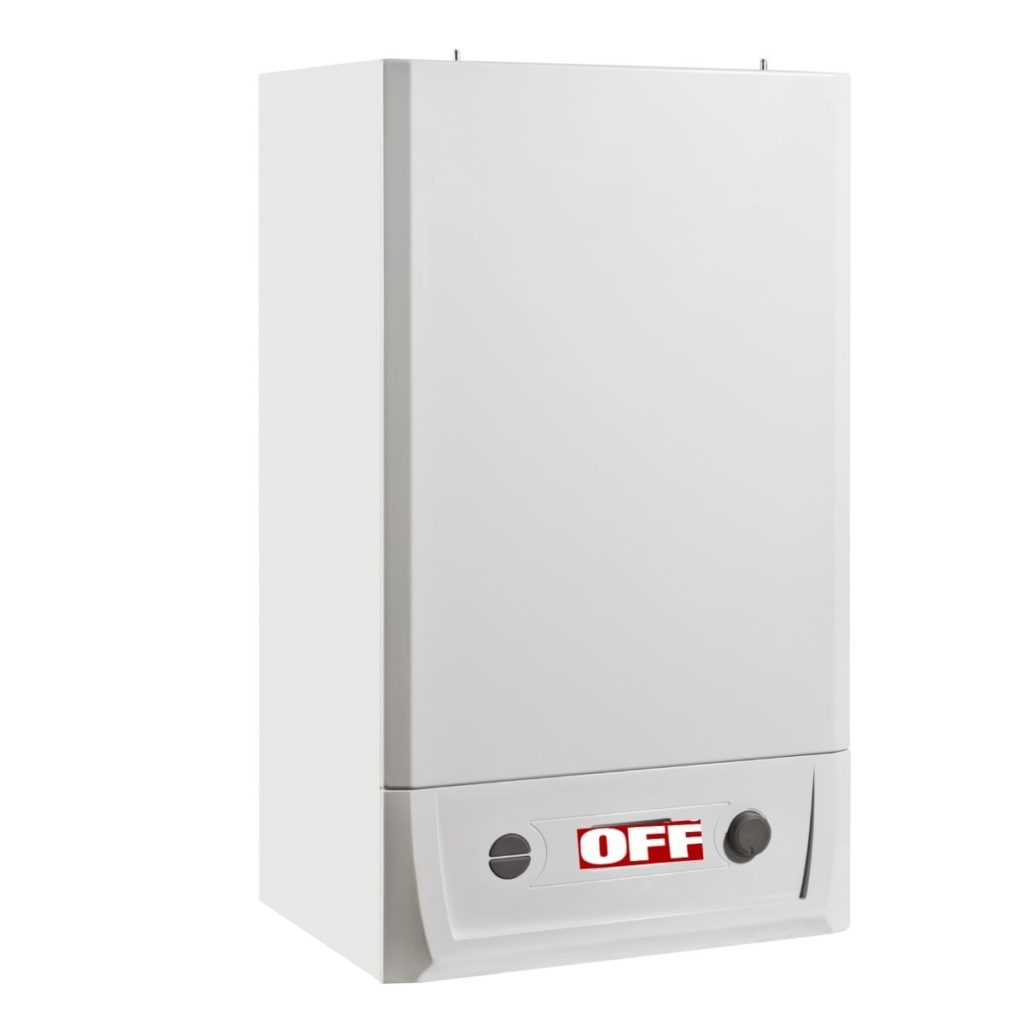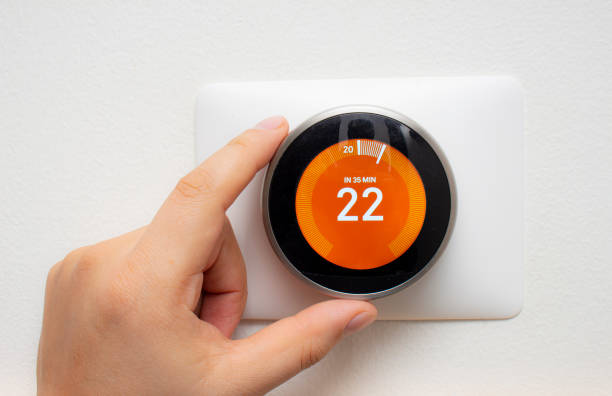If your boiler is on but you’re not getting any heating, it can be an incredibly frustrating experience. There are a few different reasons why this might be happening, and it’s important to get to the bottom of the issue as quickly as possible so that you can get your heating back up and running.
One potential cause of this problem is a faulty thermostat. If your thermostat is not working properly, it may not be sending the signal to your boiler to turn on the heating. Another possible cause is a problem with your boiler’s pump. If the pump is not working correctly, it may not be circulating hot water around your heating system, which could explain why you’re not getting any heat.
Whatever the cause of the issue, it’s important to get a qualified heating engineer to take a look as soon as possible. They will be able to diagnose the problem and recommend the best course of action to get your heating back up and running.
No heating as a warning sign your boiler may be about to break down

Understanding Your Boiler
When your boiler is on but there is no heating, it can be frustrating and uncomfortable. Understanding how your boiler works can help you troubleshoot the problem and potentially avoid costly repairs.
Firstly, it’s important to understand the two main types of boilers: combi and system boilers. Combi boilers provide both hot water and heating on demand, while system boilers store hot water in a cylinder and distribute it throughout the house.
Next, you should familiarise yourself with the key components of your boiler. These include the thermostat, pressure gauge, expansion vessel, and pump. The thermostat regulates the temperature of your home, while the pressure gauge monitors the pressure in the system. The expansion vessel helps to maintain the pressure, and the pump circulates the hot water around the system.
If your boiler is on but there is no heating, there are a few things you can check before calling a professional. Firstly, check the thermostat to make sure it is set to the desired temperature. If it is, check the pressure gauge to ensure the pressure is within the recommended range. If the pressure is too low, you may need to top up the system using the filling loop.
Another common issue is air in the system, which can prevent the hot water from circulating properly. You can bleed the radiators to release any trapped air, which should improve the heating performance.
In summary, understanding your boiler and its components can help you diagnose and potentially fix issues with your heating. Regular maintenance and checks can also help prevent problems from occurring in the first place.
Common Reasons for No Heating
When your boiler is on but there’s no heating, there could be a number of reasons why this is happening. In this section, we will discuss some of the most common reasons for this issue.

1. Thermostat Issues
One of the most common reasons for no heating when the boiler is on is an issue with the thermostat. If your thermostat is not working properly, it may not be sending the correct signals to the boiler to turn on the heating. Check your thermostat’s batteries, settings, and location to ensure it’s working correctly.
A guide to boiler controls to ensure your heating is switched on
2. Airlocks
Another common reason for no heating is airlocks in the system. Airlocks can prevent hot water from circulating through your radiators, which means you won’t get any heat. To fix this issue, you may need to bleed your radiators or call a professional to do it for you.
3. Faulty Pump
If your pump is faulty, it may not be able to circulate the hot water around your heating system, which means you won’t get any heat. A qualified engineer will be able to diagnose and fix the issue.
Faulty boiler components that can cause no heating and expensive repairs
4. Blocked Pipes
Blocked pipes can also prevent hot water from circulating through your radiators, which means no heat. This can be caused by a build-up of sludge or debris in the pipes. A power flush may be needed to clear the blockage.
5. Low Water Pressure
Low water pressure can also cause your heating to stop working. Check your boiler’s pressure gauge to see if the pressure is too low. If it is, you may need to top up the system or call a professional to do it for you.
In summary, when your boiler is on but there’s no heating, it could be due to thermostat issues, airlocks, a faulty pump, blocked pipes, or low water pressure. If you’re unsure about any of these issues, it’s always best to call a qualified engineer to diagnose and fix the problem.
Possible Causes of No Heating When Boiler is On:
| Issue | Description | Solution |
|---|---|---|
| 1. Thermostat Issues | Incorrect signals to the boiler due to a malfunctioning thermostat. | Check batteries, settings, and location of thermostat. |
| 2. Airlocks | Hot water circulation blocked by airlocks in the system. | Bleed radiators or seek professional assistance. |
| 3. Faulty Pump | Inability to circulate hot water in the heating system. | Consult a qualified engineer for diagnosis and repair. |
| 4. Blocked Pipes | Hindered hot water flow caused by sludge or debris buildup in pipes. | Consider a power flush to clear the blockage. |
| 5. Low Water Pressure | Insufficient water pressure, leading to heating issues. | Check boiler pressure and top up or seek professional help. |
Thermostat Issues
If your boiler is on but you are not getting any heating, the issue could be with your thermostat. Here are some possible thermostat issues that may be causing the problem:
Incorrect Settings
Check your thermostat settings to ensure that they are correct. If your thermostat is set to a temperature that is too low, your boiler may not be heating your home to the desired temperature. Make sure that your thermostat is set to the temperature you want your home to be at.
Faulty Thermostat
If your thermostat is faulty, it may not be communicating properly with your boiler. This can cause your boiler to stay on even when it shouldn’t be, or to turn off when it should be heating your home. If you suspect that your thermostat is faulty, you may need to replace it.
You can test your thermostat by turning it up or down and seeing if your boiler responds accordingly. If your boiler does not respond, your thermostat may be faulty.
It is also worth checking that your thermostat is in a good location. If it is in a draughty area or in direct sunlight, it may not be able to accurately detect the temperature of your home.
In summary, if your boiler is on but you are not getting any heating, the issue may be with your thermostat. Check your thermostat settings and test your thermostat to see if it is faulty. If you are unsure, it is always best to consult a professional.
Boiler Pressure Problems
If your boiler is on but not heating up, one possible cause could be low boiler pressure. Boiler pressure refers to the amount of water pressure in the system, which is necessary for the boiler to function properly.
Low boiler pressure can be caused by a number of factors, such as a leak in the system or a faulty pressure relief valve. If the pressure is too low, the boiler may not be able to generate enough heat to warm up your home.
To check the boiler pressure, you can look at the pressure gauge on the boiler. The ideal pressure range is usually between 1 and 1.5 bar. If the pressure is below 1 bar, you will need to re-pressurize the system.
To re-pressurize the boiler, you will need to locate the filling loop, which is a flexible hose that connects the boiler to the mains water supply. Once you have located the filling loop, you can open the valves to allow water to flow into the system. Keep an eye on the pressure gauge and stop filling once the pressure reaches the ideal range.
If you are unable to re-pressurize the system or if the pressure drops again soon after filling, there may be a leak in the system that needs to be repaired. In this case, it is best to call a qualified heating engineer to diagnose and fix the problem.
In summary, low boiler pressure can cause your boiler to be on but not heating up. Checking and maintaining the boiler pressure can help ensure that your heating system is functioning properly and keeping your home warm.
Issues with Central Heating Pump
If your boiler is on but there is no heating, one of the possible causes could be a malfunctioning central heating pump. The central heating pump is responsible for circulating hot water from the boiler to the radiators or underfloor heating system. If the pump is not working correctly, the hot water will not be distributed around the system, resulting in no heating.
There are several reasons why the central heating pump may not be working correctly. Here are some of the most common issues:
- Blocked pump: Over time, the central heating pump can become clogged with debris, such as sludge or rust particles. This can restrict the flow of water and prevent the pump from working correctly. To fix this issue, you may need to flush the system or replace the pump.
- Airlock: If there is air trapped in the central heating pump, it can prevent water from circulating properly. This can be fixed by bleeding the radiators or using a pump vent key to release the air.
- Faulty pump: If the central heating pump is faulty, it may need to be replaced. Signs of a faulty pump include strange noises, leaks, or the pump not turning on at all.
- Incorrect pump speed: If the pump speed is set too low, it may not be able to circulate water around the system effectively. On the other hand, if the speed is set too high, it can cause excessive noise and vibration. Check the pump speed settings and adjust as necessary.
If you are experiencing issues with your central heating pump, it is best to contact a qualified heating engineer to diagnose and fix the problem. Attempting to fix the issue yourself could be dangerous and may cause further damage to your heating system.
Boiler Fault Codes
When your boiler is on but there is no heating, it is likely that there is a fault with the system. One way to identify the fault is by checking the fault codes displayed on the boiler. Fault codes are a series of numbers and letters that indicate the specific problem with the boiler.
Here are some common fault codes that you may see on your boiler:
- F1 – This fault code indicates that there is a problem with the ignition. The boiler is unable to light the gas to start the heating process.
- F2 – This fault code indicates that there is a problem with the flame. The boiler is unable to detect a flame or the flame is not strong enough.
- F3 – This fault code indicates that there is a problem with the fan or air pressure switch. The boiler is unable to detect the correct air pressure, which is necessary for the combustion process.
- F4 – This fault code indicates that there is a problem with the temperature sensor. The boiler is unable to accurately detect the temperature of the water, which can cause the boiler to overheat.
If you see any of these fault codes on your boiler, it is important to contact a qualified engineer to diagnose and repair the problem. Trying to fix the problem yourself could be dangerous and may cause further damage to the boiler.
It is important to note that different boiler models may have different fault codes and meanings. Always refer to the manufacturer’s manual for specific information on your boiler’s fault codes.
Professional Boiler Inspection and Repair
If your boiler is on but not heating, it may be time to call in a professional for inspection and repair. A qualified heating engineer can help diagnose and fix the issue, ensuring your boiler is working efficiently and safely.
During a professional boiler inspection, the engineer will check various components, including the thermostat, pressure gauge, and valves. They may also perform a visual inspection of the boiler and its surroundings, looking for any signs of damage or wear and tear.
Once the inspection is complete, the engineer will provide you with a report detailing any issues found and recommended repairs. This may include replacing faulty parts, cleaning the system, or adjusting the settings.
It’s important to hire a qualified and experienced heating engineer for boiler repairs. Look for someone who is registered with Gas Safe, the UK’s official gas registration body. This ensures that they have the necessary training and qualifications to work safely with gas appliances.
In addition to professional repairs, there are also some steps you can take to keep your boiler working efficiently. This includes regular maintenance, such as cleaning the system and checking the pressure gauge. You should also ensure that the boiler is serviced annually by a qualified engineer.
By taking care of your boiler and getting professional repairs when needed, you can ensure that it continues to provide reliable heating and hot water for years to come.
